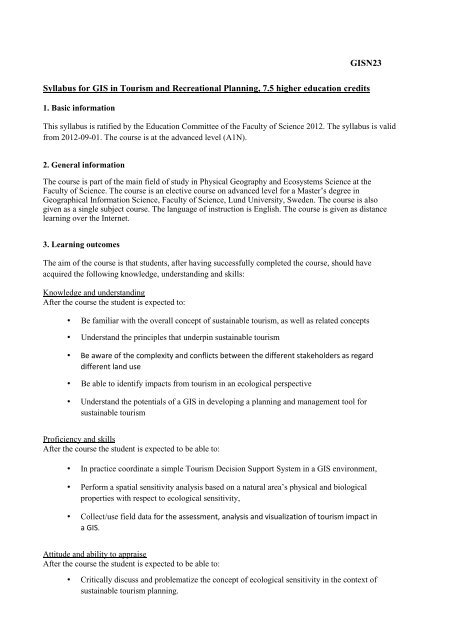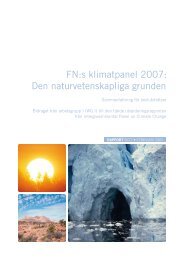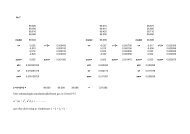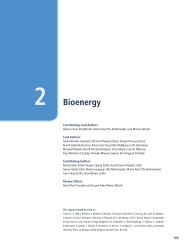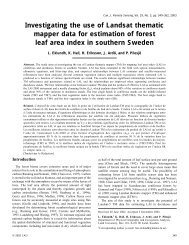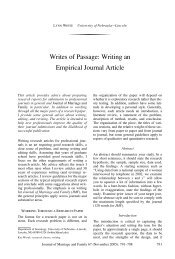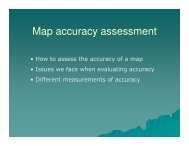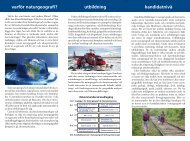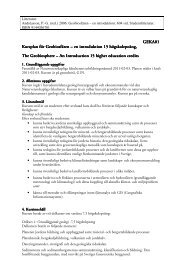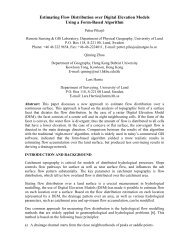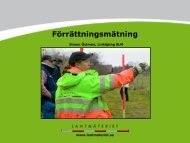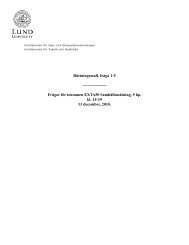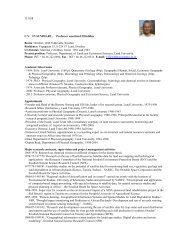Course curriculum
Course curriculum
Course curriculum
You also want an ePaper? Increase the reach of your titles
YUMPU automatically turns print PDFs into web optimized ePapers that Google loves.
GISN23Syllabus for GIS in Tourism and Recreational Planning, 7.5 higher education credits1. Basic informationThis syllabus is ratified by the Education Committee of the Faculty of Science 2012. The syllabus is validfrom 2012-09-01. The course is at the advanced level (A1N).2. General informationThe course is part of the main field of study in Physical Geography and Ecosystems Science at theFaculty of Science. The course is an elective course on advanced level for a Master’s degree inGeographical Information Science, Faculty of Science, Lund University, Sweden. The course is alsogiven as a single subject course. The language of instruction is English. The course is given as distancelearning over the Internet.3. Learning outcomesThe aim of the course is that students, after having successfully completed the course, should haveacquired the following knowledge, understanding and skills:Knowledge and understandingAfter the course the student is expected to:• Be familiar with the overall concept of sustainable tourism, as well as related concepts• Understand the principles that underpin sustainable tourism• Be aware of the complexity and conflicts between the different stakeholders as regarddifferent land use• Be able to identify impacts from tourism in an ecological perspective• Understand the potentials of a GIS in developing a planning and management tool forsustainable tourismProficiency and skillsAfter the course the student is expected to be able to:• In practice coordinate a simple Tourism Decision Support System in a GIS environment,• Perform a spatial sensitivity analysis based on a natural area’s physical and biologicalproperties with respect to ecological sensitivity,• Collect/use field data for the assessment, analysis and visualization of tourism impact ina GIS.Attitude and ability to appraiseAfter the course the student is expected to be able to:• Critically discuss and problematize the concept of ecological sensitivity in the context ofsustainable tourism planning.
• Describe how the planning and management of tourism can be performed in sensitiveenvironments.• Assimilate, critically evaluate and discuss scientific publications in the field of sustainabletourism and recreational planning• Critically examine and conclude accuracy as well as topicality of geographical sourcedata• Critically examine and evaluate analysis results of geographical data as regard tourismand recreational planning.4. <strong>Course</strong> contentsThe course consists of the following parts:• Types of Natural Area Tourism.• Sustainable tourism; concepts, definitions and conflicts.• Planning, handling and management of tourism in sensitive landscapes.• Conflicts between tourism development, economic development and the environment atregional and local scale.• Tourism Decision Support System in a GIS; Digital maps and databases for planning.• Mapping of ecological sensitivity in natural areas.• Mapping and analyzing tourism environmental impact, such as hiking trail conditions5. Teaching and assessmentTeaching consists of lectures, practical and theoretical exercises and seminars. Exercises and seminars arecompulsory. We highly encourage students to attend lectures.The course is fully based on distance learning, with all material distributed over the Internet. It is flexiblein the sense that students can study full time (100%), half time (50%), or with a 25% study tempo.Examination is in the form of a written exam, and through approved individual exercises.For students who fail the regular exam, a resit is offered within a month.6. GradesStudents are graded for the course according to the following levels: High Pass (distinction), Passed, andFailed.In order to pass the course the student is required to have passed the exam, all compulsory exercises, andto have participated in all compulsory course elements.
The final grade for the course is determined by the result of the written exam and the practical exercises.7. Entrance qualificationsThe following are required for admission to the course: Basic admission requirements of LundUniversity, and at least 1.5 years full time studies at university level, including half a year (30 highereducation credits) basic GIS, corresponding to GISA01, GISA02 and GISA11.8. LiteratureAccording to a list established by the department, available at least five weeks before the start of thecourse.


